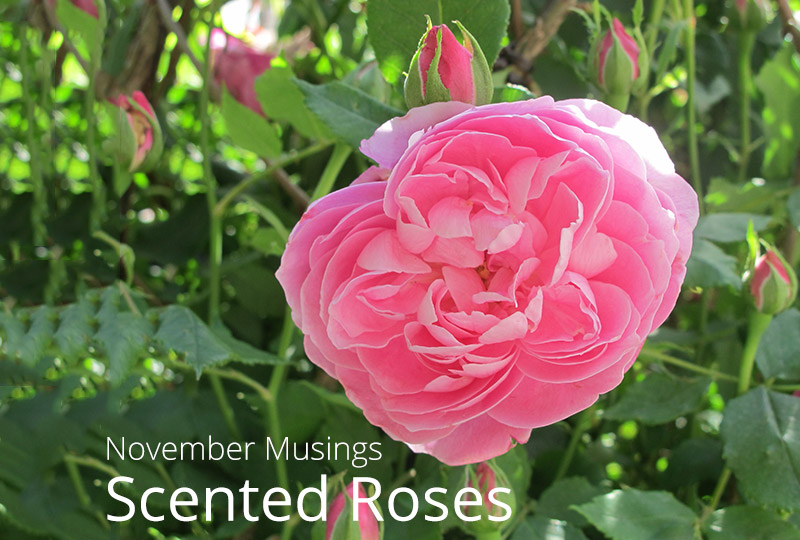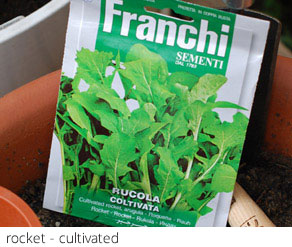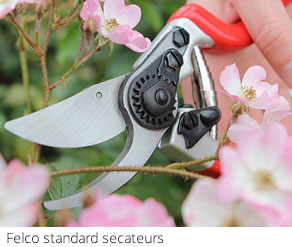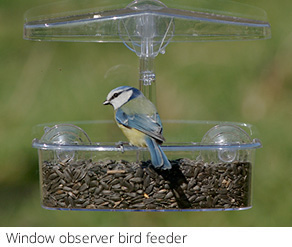November is surely the most dreary gardening month of all, and the American politician and feminist, Madeleine M. Kunin, summed it up brilliantly when she said that “if months were marked by colors, November …… would be colored gray.” Fortunately gardeners can rise above the dreary gloom this month inevitably brings, and get on with planting roses, ones with the sort of scent that smacks of a perfect summer’s day.
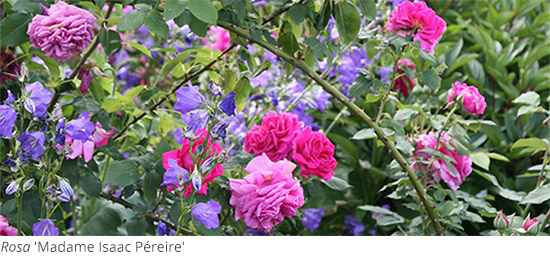
There are plenty of deliciously fragrant roses to choose from because modern rose breeders often select with scent in mind. They’ve been inspired by old-fashioned roses and most rose buffs agree that the most fragrant rose of all is Rosa 'Madame Isaac Péreire’. This blowsy Bourbon beauty, with sumptuous bright pink blooms, flowers earlier than most and nearly always has a magnificent late flush as well. These late flowers are extremely large and well-formed and their pure colour is enhanced by autumnal light.
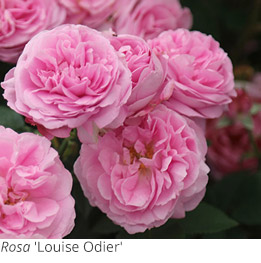 Famous rosarians from the past adored ‘Madame Isaac Péreire’ and Graham Stuart Thomas described her as “bulging with rolled petals.” The discerning Gertrude Jekyll was also a fan and this rose can be used as a shrub or trained to climb. It was raised in 1880 or 1881 by Garçon, and Isaac’s wife paid for the rose to be named after her to surprise her husband. Isaac Péreire’ was the founder of a French bank and, in his day, was as famous as any Rothschild. Isaac and his brother Emile built the first railway in France, running from Paris to St. Germain, and went on to build railways in Switzerland, Russia, and Spain. Isaac was made a knight of the Légion d'honneur, but he died in 1880, the year his wife’s rose was launched, so he may never have appreciated what a beauty it is. Famous rosarians from the past adored ‘Madame Isaac Péreire’ and Graham Stuart Thomas described her as “bulging with rolled petals.” The discerning Gertrude Jekyll was also a fan and this rose can be used as a shrub or trained to climb. It was raised in 1880 or 1881 by Garçon, and Isaac’s wife paid for the rose to be named after her to surprise her husband. Isaac Péreire’ was the founder of a French bank and, in his day, was as famous as any Rothschild. Isaac and his brother Emile built the first railway in France, running from Paris to St. Germain, and went on to build railways in Switzerland, Russia, and Spain. Isaac was made a knight of the Légion d'honneur, but he died in 1880, the year his wife’s rose was launched, so he may never have appreciated what a beauty it is.
Isaac will undoubtedly have known the 1851 rose, ‘Louise Odier’, another pink Bourbon rose with highly scented flowers. Her warm pink flowers are flatter in profile and about four inches in diameter. David Austin, Britain’s foremost living rose breeder, rates her as the “most desirable of the recurrent-flowering old roses.” This is praise indeed for this bushy rose raised by Margottin is over a hundred and sixty years ago.
David Austin, became captivated by old-fashioned roses after his sister, Barbara, gave him A. E. Bunyard’s book of Old Garden Roses. A few years later he began to breed roses, crossing some of his favourite old-fashioned varieties with modern hybrid teas and floribundas.

 He was trying to restore the old-rose fragrance that had been largely bred out of modern 20th century roses, so all his named roses are fragrant.
His first rose ‘Constance Spry’, launched in 1961, was named after a famous flower arranger who amassed a huge collection of old roses in her private garden near Ascot in berkshire. Without her many old roses may have been lost forever. Austin’s rose has myrrh-scented, cupped pink flowers but only flowers once. Don’t let that put you off though. Once and only roses drip with flower and make June extra special. Add a viticella clematis, such as the purple ‘Étoile Violette’, for later colour. He was trying to restore the old-rose fragrance that had been largely bred out of modern 20th century roses, so all his named roses are fragrant.
His first rose ‘Constance Spry’, launched in 1961, was named after a famous flower arranger who amassed a huge collection of old roses in her private garden near Ascot in berkshire. Without her many old roses may have been lost forever. Austin’s rose has myrrh-scented, cupped pink flowers but only flowers once. Don’t let that put you off though. Once and only roses drip with flower and make June extra special. Add a viticella clematis, such as the purple ‘Étoile Violette’, for later colour.
David Austin has named 237 roses and one of his finest is ‘Gertrude Jekyll’, a mid-pink Portland rose hybrid with an upright habit. The large flowers, abundantly born, are deep pink with an old-rose fragrance that makes the nose tingle. It was once voted England’s favourite rose by BBC Gardeners’ World viewers. It’s a medium-sized shrub so some gardeners also train this 1986 rose, named after the garden designer Gertrude Jekyll (1843-1932), up against a wall, or use it as a climber.

The rose that really launched David Austin into the world arena was the apricot-yellow ‘Graham Thomas’, introduced in 1983. Its fragrance was described by Robert Calkin, Austin’s fragrance expert, “as a fresh tea fragrance with a cool violet character.” It’s an upright rose, so superb planted in threes, or grown close to a wall. Graham Thomas, who was a friend of David Austin’s for 50 years, chose this rose himself and “always loved it” according to David Austin. In 2009, ‘Graham Thomas’ was voted the World’s Favourite Rose by the 41 National Rose Societies. ‘The Lark Ascending’, a much newer rose launched in 2012, has an upright habit and clusters of flowers that hover between sunset-yellow and apricot. This vigorous and exceptionally healthy rose has a fragrance that varies from tea to myrrh.
 The Reverend Joseph Pemberton (1852-1926), the raiser of the Hybrid Musks, also selected for scent and he named twenty-two roses and eleven are now said to be in the top flight. This Essex vicar lived in Havering-atte-Bower, a drier part of England, and his roses are tolerant of poorer soil and a drier climate. Some of his best roses have evocative names straight out of the 1920’s. There’s a Cornelia, a Felicia, a Daphne and a Penelope. ‘Cornelia’, which makes a medium shrub, is hardly ever out of flower and the clusters of small copper-pink flowers pick well and look well in the garden. Pemberton is also associated with two roses, launched after his death by Joseph and Ann Bentall, who inherited his rose field. ‘Buff Beauty’ (1939) is a buff-apricot rose that does best in warmth in sun and it’s a vision with reddish foliage setting off the warm flowers. It’s very sweetly perfumed too. ‘Ballerina’ (1937) is a pale-centred pink rose with clusters of small flowers. From a distance this could be mistaken for a hydrangea. The Reverend Joseph Pemberton (1852-1926), the raiser of the Hybrid Musks, also selected for scent and he named twenty-two roses and eleven are now said to be in the top flight. This Essex vicar lived in Havering-atte-Bower, a drier part of England, and his roses are tolerant of poorer soil and a drier climate. Some of his best roses have evocative names straight out of the 1920’s. There’s a Cornelia, a Felicia, a Daphne and a Penelope. ‘Cornelia’, which makes a medium shrub, is hardly ever out of flower and the clusters of small copper-pink flowers pick well and look well in the garden. Pemberton is also associated with two roses, launched after his death by Joseph and Ann Bentall, who inherited his rose field. ‘Buff Beauty’ (1939) is a buff-apricot rose that does best in warmth in sun and it’s a vision with reddish foliage setting off the warm flowers. It’s very sweetly perfumed too. ‘Ballerina’ (1937) is a pale-centred pink rose with clusters of small flowers. From a distance this could be mistaken for a hydrangea.
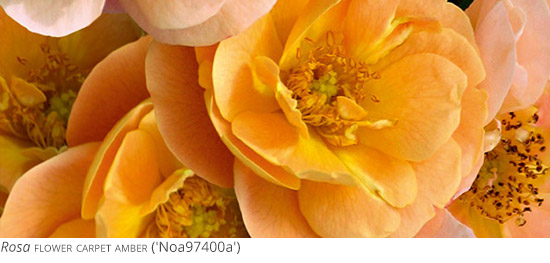
Modern roses are tough and adaptable and there are ground cover roses that could grace the front of a rose border, or sprawl down a slope. They’re almost maintenance-free and only need to be given a yearly trim with a hedge cutter. They shield out weeds and they’re packed with flower for months on end. The Flower Carpet roses are American-bred, but they thrive in Britain and many have been given an AGM. They come in shades of yellow, bright pink, white, red and yellow, but ‘Flower Carpet Amber’ is often chosen as the prettiest, with frilly small flowers in a soft honeycomb shade. The County Series is also excellent and the clean white ‘Kent’, or the mid pink ‘Surrey’, both form mounds of flower. These ground cover roses are all very healthy so the foliage never succumbs to disease.
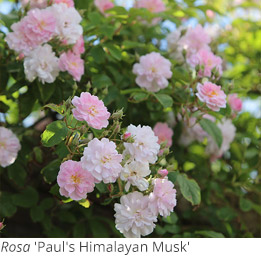 At the other end of the scale, come the ramblers. These vigorous healthy roses almost always flower only once in June. They do vary in vigour, but most will cover a shed, or scale a tree. 'Paul's Himalayan Musk’ has apple-blossom pink clusters of flower and it will scale a large tree. ‘Rambling Rector’ bears larger white flowers, with a notable scent, and this is also vigorous. ‘Goldfinch’, a warm apricot-yellow that fades to clotted cream, and the blue-tinted ‘Veilchenblau' cover less ground. Most were bred at the beginning of the 20th century and they’re healthy and vigorous. Cut away some of the old wood in November, at the base, and train in the new stems whilst they’re still pliable. They can take two or three years to get going, but once they do, they provide floral fireworks. At the other end of the scale, come the ramblers. These vigorous healthy roses almost always flower only once in June. They do vary in vigour, but most will cover a shed, or scale a tree. 'Paul's Himalayan Musk’ has apple-blossom pink clusters of flower and it will scale a large tree. ‘Rambling Rector’ bears larger white flowers, with a notable scent, and this is also vigorous. ‘Goldfinch’, a warm apricot-yellow that fades to clotted cream, and the blue-tinted ‘Veilchenblau' cover less ground. Most were bred at the beginning of the 20th century and they’re healthy and vigorous. Cut away some of the old wood in November, at the base, and train in the new stems whilst they’re still pliable. They can take two or three years to get going, but once they do, they provide floral fireworks.
|



